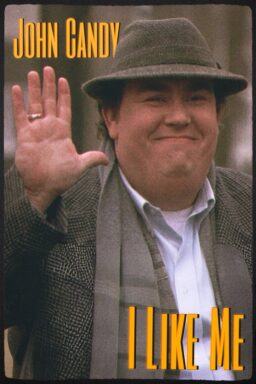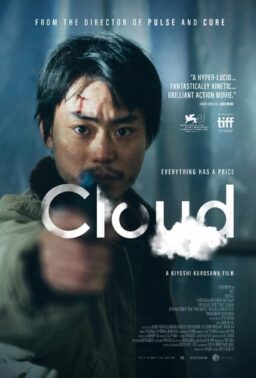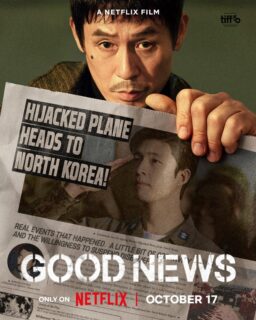The U.S. Documentary Competition category is always a strong one at Sundance, launching non-fiction films that people talk about all year long. Recent winners from this select group include “Weiner,” “The Wolfpack,” “The House I Live In,” and “Restrepo,” and dozens of other notable films have premiered in this elite program. The U.S. Doc Competition films often seem frontloaded to the opening days of the festival, and three have premiered already, a trio that illustrates the range of programming within this section. All three could safely be called “interesting,” but one of them stands out as an event movie that people will buzz about long after Sundance is over.
That film is Tim Wardle’s fascinating “Three Identical Strangers,” which first feels like it might just be about an amazing, quirky story of sudden celebrity but becomes something much stranger and even essential in the neverending debate over nature vs. nurture. “Three Identical Strangers” may be non-fiction but it’s structured and composed like the best short story you’ve never heard. And it’s one that definitely proves the dictum that life is stranger than fiction.
Bobby Shafran’s first day of college changed his life forever. While wandering the campus, he noticed that everyone was being strangely friendly to him. And they were saying things like “welcome back,” as if they knew him. A girl even came up and kissed him. The oddity of the morning was amplified when someone came in and realized the truth—while everyone else thought this was Eddy Galland, it wasn’t. It was his identical twin. The two had been separated at birth and given to different parents, reunited by strange circumstance. The story was so surprising that it made several newspapers, one of which was read by the family of David Kellman, also born on the same day in 1961 and also adopted from the same NYC agency. You can tell what happened next by looking at the picture above.
Bobby, Eddy, and David actually became quasi-celebrities. They were the version of viral for the early ‘80s. They went on shows like “Donahue” and became famous in the Big Apple, hitting clubs like Studio 54, and even moving into their own bachelor pad together. It wasn’t long before they turned their fame into a business, a restaurant called Triplets. The quick ascendancy to fame would be interesting enough for a documentary, but here’s about where “Three Identical Strangers” turns. Why didn’t the parents know their adopted children had identical brothers? And what was their mother’s story? “Three Identical Strangers” has a story you wouldn’t believe if it was in a fictional film, a series of jaw-dropping revelations that raise ethical questions that people have been discussing for years.
Of course, the foundation of “Three Identical Strangers” rests on a timeless question—nature vs. nurture. When the boys are reunited, they notice several fascinating similarities—they smoke the same brand, have the same speaking patterns, note their similar taste in women. How much of who we are is embedded in our DNA? And how much isn’t? This is a fantastic conversation-starter, a film that perfectly balances the deeper questions inherent in its true story with a character study of some fascinating guys. It’s enjoyable, funny, sweet, smart, and heartbreaking. When you get a chance, don’t miss it.

Documentaries about the increasingly tense relationship between police officers and the communities in which they work are a Sundance mainstay. You can count on one or two every year, and 2018’s entry is Stephen Maing’s frustrating “Crime + Punishment,” the detailed story of the NYPD12. The modern era of the NYPD, one in which mayors and other officials have repeatedly bragged about the reduced crime rate in the Big Apple, has not been without its share of scandal, and Maing was given access to one of the biggest of the last decade, the accusation of a group of a dozen minority officers that not only is the reportedly-outlawed quota system still in place but that officers who don’t enforce it are punished for their disobedience.
For years, it was an open secret that New York police officers had arrest quotas that had to be met every month, leading to questionable arrests. While the NYPD has claimed that this system is no longer in place, “Crime + Punishment,” using secret audio recordings and private documents, reveals how much it is, and the damage that it does. Quota systems force cops to essentially just round up people on the street to get a “collar.” Of course, the case gets dismissed when it gets into the justice system, but, by that time, the person arrested has already been stigmatized, or worse if they’re stuck at a place like Rikers Island. We meet one man with 7 dismissals. Think not only of the massive waste of time this entails but the rift between officers and the community it creates. And then consider that Eric Garner was likely a victim of a quota needing to be met.
Maing was allowed a remarkable degree of access to the brave people blowing the whistle on this system, but he could have pared his film down a bit more. Around the hour mark, we run into some notable pacing problems—there are just a few too many extravagant shots of the city and meetings that run on too long. The subject matter is important, and the direction is confident, but the same effect could have been produced with 15-20 minutes of tightening throughout the film. Having said that, “Crime + Punishment” is still worth a look, and worth considering the next time you hear the spin as to how much New York has solved its crime problems.

A similar length problem plagues Nathaniel Kahn’s “The Price of Everything,” which also premiered this morning in the U.S. Documentary Competition program. Kahn’s film brings us into the high-priced art market, asking interesting questions about the purpose of art and the motivation to collect it, but it could have done what it does in the space of a “Frontline” special or even a really strong “60 Minutes” segment. It feels like it’s too often spinning its wheels, making the same points over and over again.
That point that Kahn makes is basically that art and commerce are strange bedfellows. He spent a lot of time with collectors (including an unforgettable one in Chicago who has turned high-priced art collecting into his life’s passion) and artists, often capturing how different they are purely through conversation. We meet Jeff Koons, the current king of the high-priced art world, and a man who is not-so-casually portrayed as something of a hustler (former colleagues compare him to Leonardo DiCaprio in “The Wolf of Wall Street”). Koons has a factory producing art for him, claiming that it’s all his designs and under his direction, but raising the question of if an artist can take credit for a painting he never actually touches. We also meet artists who seem to look at the auction houses and art fairs at which collectors mark up their works from afar, rarely seeing any of the profit being made by the wealthy class that treats their art like product.
The key line in Kahn’s film is the one that gives it its title: “There are a lot of people who know the price of everything and the value of nothing.” And yet Kahn is careful not to portray the collectors he profiles as cartoonish villains. I wish he spent more time with curators and even casual art fans to fill out what feels like an overly thin film. Yes, artists and the people collect their art often seem to have a strangely disconnected view of the actual product. But “The Price of Everything” doesn’t quite apply that fact to a greater context of a world that seems increasingly materialistic.












